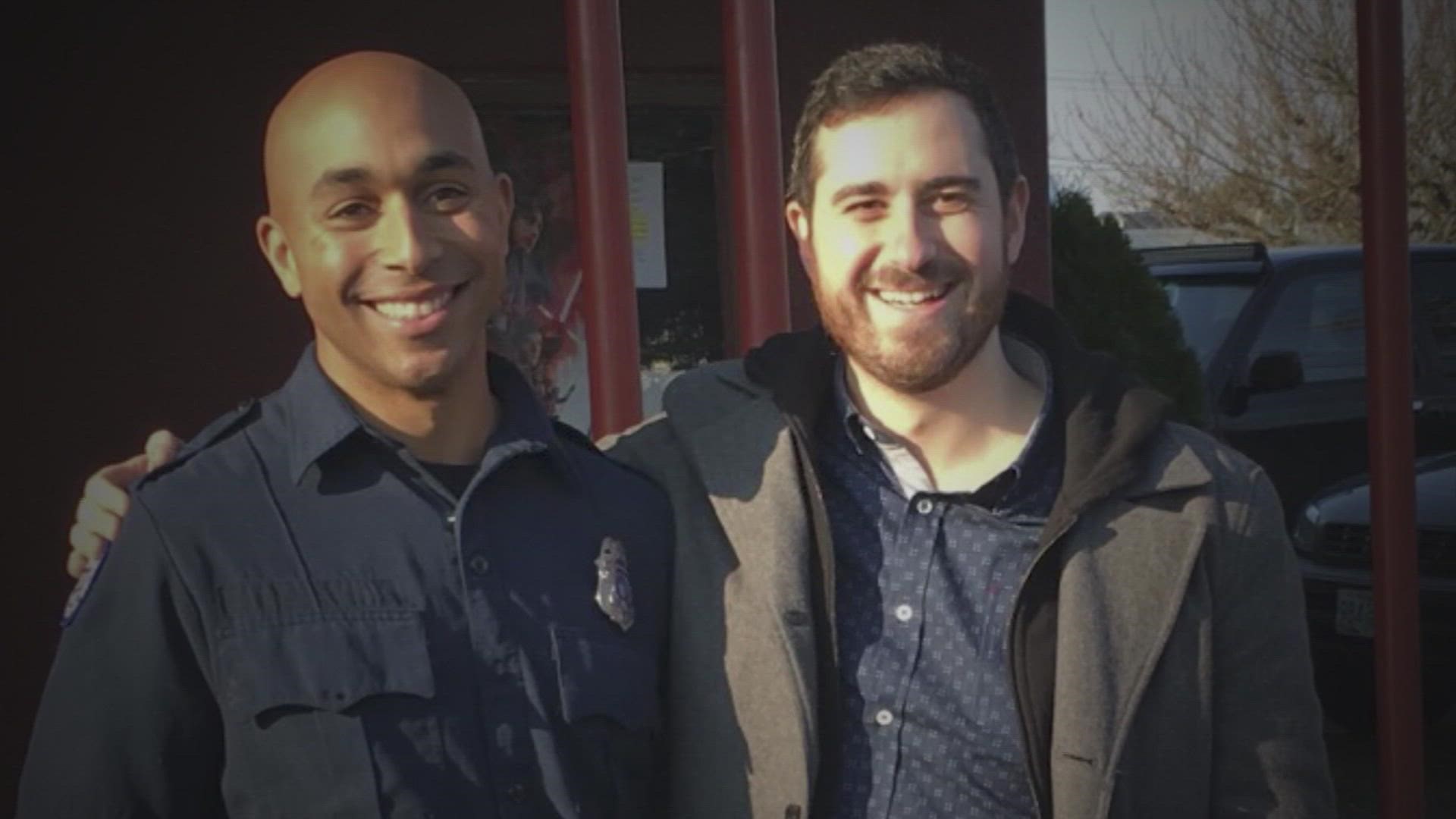BELLEVUE, Wash. — The motor procession for an officer killed in the line of duty is at once both saddening and touching. Caused by tragedy, the procession and subsequent memorial give the community a chance to come together and share in the celebration of service as well as their grief over a lost service member.
Marked by a mesmerizing number of vehicles and a route lined by residents and their families showing their support, the procession gives us the opportunity to grieve as a community, according to Brian Johnston, executive director of the Behind the Badge Foundation.
Johnston said that while each individual grieves in a unique and particular way, the procession is the time residents come together to help remember and mourn with the law enforcement family and show them the support and honors that are afforded someone who gives their life to service.
Here is a breakdown of what participants and onlookers can expect during a procession for a fallen member of law enforcement and what particular moments signify.
The start
The family motorcade for a fallen officer will gather prior to the procession along with all of the law enforcement members and friends joining in.
The route between the procession’s starting point and the location of the memorial service will already be established in advance. City or county officials will ensure that it is safe and practicable.
Also, city or county officials will ensure that all vehicles in the procession are clearly identifying themselves by keeping their headlights on or using their siren lights.
Johnston said that ahead of the family motorcade will run what’s called a "five-minute bike," which is a group of motorcycle officers who run the procession route ahead of the others to ensure there are no blockages and everything is in place.
During the procession
The family motorcade will be accompanied by a large contingent of motorcycle riders who follow along and cover every intersection and cross-street along the route to protect the family.
Along the route, the public is allowed to gather and show support by waving flags and holding signs for the family.
The group of officers riding with the motorcade will primarily be from the agency the fallen officer served under.
Arrival
When the motorcade arrives at the memorial’s venue, a sequence of groups lines up to then escort the family’s motorcade along the final stretch.
These four groups include the bagpipers, the rifle team for the 21-gun salute, the riderless horse who follows the caisson horses and then the honor guard that will remain with the family throughout the day.
These four groups lead the family motorcade beneath a garrison flag, which is flown from crossed ladders, signifying the point at which the memorial procession begins.
First, the bagpipers enter, which is a mourning tradition that dates back to Irish Catholic roots, according to Johnston. This tradition also involves the black mourning band placed over the badge.
The bagpipers are followed by the rifle team and then the riderless horse, which carries a set of boots facing backward, representing the fallen officer saying farewell to their fellow service members, Johnston said.
The honor guard escorts the family motorcade the rest of the way on foot.
At no point during the procession or the days leading up to the memorial is the body of the officer left alone, whether it be fellow officers, the family or friends watching over it.
As the procession ends, the honor guard then takes watch over the fallen officer’s remains until the memorial begins.

